Asset Allocation Models for Passive Income Portfolios
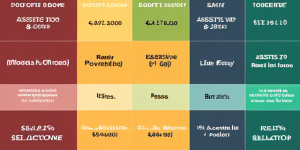
Asset Allocation Models for Passive Income Portfolios
Building a passive income portfolio focused on generating consistent cash flow requires a strategic asset allocation across diversified holdings. Optimal mixes utilize stocks, bonds, real estate, and alternative assets balanced to create steady streams of dividends, interest, rental proceeds, and other distributions.
This guide examines specialized asset allocation models for crafting portfolios poised to churn out passive income for years to come.
Overview of Passive Income
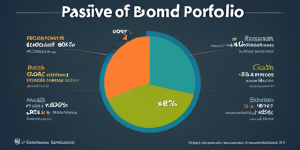
Asset Allocation Models for Passive Income Portfolios
Before detailing construction blueprints, let’s define passive income itself:
What is Passive Income?
Passive income refers to earnings received on a regular basis without having to punch a clock or actively work for the money. Revenue generated while you sleep.
Examples include:
- Stock dividends
- Bond interest payments
- Rental real estate proceeds
- Royalty earnings from intellectual property
- Affiliate commissions
- Business ownership distributions
The key is establishing revenue streams flowing automatically over long periods, ideally for life. This provides cash flow funding living expenses or reinvesting.
Benefits of Focusing on Passive Income
Some perks of passive income include:
- Covers living costs without solely relying on active work
- Frees up time for leisure activities, vacations, family time
- Enables earlier retirement as portfolio covers ever-increasing expenses
- Pass assets and cash flow streams to heirs creating generational wealth
- Gains outpace rate of inflation protecting future purchasing power
- Compounding effects accelerate growth over decades
The right portfolios put your money to work perpetually fueling non-stop cash distributions.
Crafting an Allocation for Passive Income
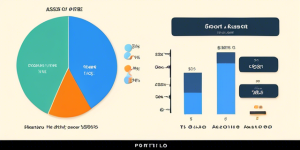
Asset Allocation Models for Passive Income Portfolios
With the basics covered, let’s examine frameworks for asset allocating income focused portfolios:
Stock/Bond Foundation
The base layers involve stocks and bonds providing portfolio stability plus respective dividends and interest.
Common starting mixes include:
- 60% stocks / 40% bonds
- 50% / 50% split
Bonds balance risk while still generating income from coupon payments. Increase bond holdings as you near retirement.
Income Producing Assets
Supplement foundations with assets explicitly designed to supply income streams:
- High-yield dividend stocks
- Dividend ETFs / funds holding dividend payers
- REITs – Real estate and specialty vertical REITs like cell towers or data centers
- Preferred shares – Higher fixed dividend payments from stocks with partial debt qualities
These expand direct passive income sources beyond plain vanilla stock dividends.
Alternative Income Streams
Further diversify passive revenues through alternative assets:
- Rental real estate – Direct property ownership or crowdfunded fractional shares
- Royalties from patents, books, music or products
- Peer-to-peer lending and crowdfunded notes
- Ownership interests in cash flowing private businesses
- Online courses or membership communities you create
Alternative income often proves recession resilient, adding defensive qualities.
Sample Multi-Asset Allocation
Putting strategic guidance into practice, here is one model passive income portfolio:
- 50% Dividend Stocks
- 20% Corporate & Muni Bond Funds
- 15% REITs
- 10% Preferred Shares
- 5% Alternative Streams (rental property, royalties, peer lending)
Annually rebalance while leaving room to overweight the highest performance areas.
Equity Stock Approaches
Now let’s dig deeper on the all-important equity stock layer fueling passive income portfolios:
Individual Dividend Growth Stocks
Hand selecting 20-30 stocks with clear competitive advantages, consistent growth and histories of frequent dividend increases builds a foundation for rising income over decades. Aim for at least 2%+ dividend yields on each holding.
Dividend ETFs
For simplicity, diversified ETFs tracking dividend stock indexes like the S&P 500 Dividend Aristocrats or First Trust Value Line provide single tickers granting exposure to hundreds of dividend payers. Reasonable 0.20-0.50% expense ratios keep costs low on set-it-and-forget holdings.
Dividend Mutual Funds
Similarly, mutual funds focused explicitly on long-term dividend growth companies make inclusion simple while professional managers handle tuning the holdings. Leading options include Fidelity Dividend Growth, T. Rowe Price Dividend Growth and Vanguard Dividend Appreciation.
Blend individual picks with diversified funds to balance control and simplicity.
Fixed Income to Fund Living Expenses
Quality bonds generate reliable income through semi-annual coupon payments. Laddering strategies further enhance liquidity.
Individual Corporate & Municipal Bonds
Meticulously building ladders selecting individual bonds balancing yields, quality ratings and maturity dates leads to precision cash flows funding living needs. Perhaps start maturities at 2 years while extending out decades with AAA-rated corporations and munis free from state taxes.
Bond ETFs & Mutual Funds
Prefer simplicity? Leading bond index and actively managed mutual funds put top fund managers to work crafting institutional grade fixed income portfolios balanced across corporates and munis. Vanguard, iShares, Schwab and Fidelity offer solid options with cheap expense ratios below 0.50%.
Use individual issues for precise control or diversified funds for broad exposure and simplicity holding bonds.
Property Investments
Real estate long served as a leading inflation hedge with tangible land always in demand. Modern REIT vehicles simplify secure access to rental income streams.
Physical Rental Properties
Directly owning managed investment rental properties remains a stalwart generator of mostly passive income. Employ professional property managers to handle tenant residency, maintenance and expenses in exchange for 8-12% off gross rents. Target at least $250/month+ per door. Eventually, 10-20 such properties create substantial multiplied cash flows. Of course, down payments, insurance, taxes, Capex, vacancies and property management fees factor into net returns.
REITs
Real Estate Investment Trusts enable fractional, diversified ownership of large commercial and residential property portfolios including apartments, malls, cell towers and self storage. High dividend yields derived from rental income without landlord duties. 500+ public REITs span sectors and risk profiles.
Blend private rentals with diversified REITs to incorporate real estate income streams.
Preferred Shares
Preferred shares offer equity ownership with fixed dividend payments. They anchor income portfolios with less risk than common shares thanks to senior payout priority and higher yields around 5-8%.
Types of Preferred Shares
Main preferred share classes include:
- Perpetual – No maturity date
- Callable – Issuers can redeem shares at certain dates
- Convertible – Swap into common stock shares
- Cumulative – Missed dividends still owed
Study details to assess anticipated income duration and conversion potential before investing.
Buying Individual Preferred Shares
Stick with investment grade $25/share traditional issuances from stalwart financial companies like JPMorgan and Wells Fargo for reliable income. Focus on non-callable variety without forced redemption risk.
Preferred ETFs
Access diversified baskets covering hundreds of preferred stocks via convenient ETFs like iShares Preferred Securities, Invesco Preferred Portfolio and Global X U.S. Preferred holdings for simplicity.
Blend both individual issues and diversified funds per investor preference.
Alternative Income Assets
Further expand passive revenue streams through alternative real assets and digital sources uniquely positioned to enrich overall portfolio income.
Triple Net Lease REITs
A niche real estate category, these REITs own properties leased to high quality tenants signed to long-term triple net lease agreements whereby the renter pays property taxes, insurance and maintenance costs. This leads to secure, predictable income streams perfect for funding distributions. Target names like Realty Income, STORE Capital, and Agree Realty.
Peer to Peer Lending
Online peer-to-peer lending platforms like Lending Club and Prosper enable investors funding personal loans to consumers and small business owners. Interest and principal repayments flow back monthly, quarterly or annually based on terms. Target 6-12% returns across grades balancing risk and yield.
Online Courses / Memberships
Leverage skills, expertise and creativity to build online learning courses, communities and content people gladly pay for monthly via passive subscriptions. Host on platforms like Podia, Thinkific or MemberSpace.
Blend these non-traditional assets to further expand steady portfolio income streams.
Tailor and Implement Your Allocation
With abundant options across stocks, bonds, property and alternatives – optimally blending assets aligned with your risk appetite and lifestyle cash flow needs requires customization.
Determine Desired Income Levels
What annual passive income amount meets your life funding goals? $20,000? $60
Determine Desired Income Levels
What annual passive income amount meets your life funding goals? $20,000? $60,000? $100,000? Quantify needs to backsolve required portfolio size and allocation mixes.
Assess Individual Risk Tolerance
Be honest about ability to endure volatility across assets. Bonds and preferred stocks offer less risk than stocks. Not everyone suits aggressive 100% equity allocations. Consider potential sleepless nights before committing to risky assets promising higher yields.
Build Gradually Over Time
Rome wasn’t built in a day and neither are generating passive income portfolios. Construct your allocation across years making periodic investments as savings accumulate. Achieve balance through patience rather than rushing into potentially suboptimal positions.
Reinvest Income to Accelerate Growth
Especially early on, consider automatically reinvesting dividends, interest payments, rental proceeds and other portfolio income via dividend reinvestment plans (DRIPs) or self-directed purchases of additional shares. This compounds holdings and income exponentially over decades.
Review and Rebalance Annually
As certain assets outperform over years, allocations drift out of whack with original targets. Revisit models annually moving funds from overweighted segments back toward plan balances. This controls risk and reallocates capital into laggards primed for catch-up.
Stick with strategic blueprints through ups, downs and recessions. Give long run compounding time to work its magic.
Conclusion
Constructing model asset allocations focused explicitly on generating reliable passive income requires blending reliable dividend stocks, bound interest payments, rental real estate proceeds and alternative income streams.
Employ a diversified multi-asset class portfolio spanning traditional and alternative holdings calibrated to risk tolerances and lifestyle income goals. Reinvest initially to compound earnings faster then ultimately fund expenses directly from cascading cash flows.
Patiently executed, high-yield income portfolios liberate investors from solely relying on active work via perpetual automated revenue machines.
Frequently Asked Questions
What percentage of portfolio should generate passive income?
Ideally build allocations with 50-70% of holdings devoted to income generation from dividend payers, bonds, REITs, preferred shares and alternative assets like P2P lending. Remaining is growth holdings.
How much passive income can a $500K portfolio generate?
Conservatively structured $500K balanced portfolios yielding 5% average across assets can reasonably produce around $25,000 in annual passive income from dividends, interest, rents etc.
What is the 4% rule for passive income portfolios?
The 4% rule suggests limiting annual withdrawals to about 4% of total portfolio value to sustain income for 30 years. This avoids depletion. So on $1 million portfolio, limit passive income intake to $40,000 per year.
What percentage of portfolio should be dividend stocks?
When constructing income focused portfolios, allocate at least 40-60% toward dividend paying stocks. More is acceptable too based on risk tolerance. Mix with bonds, preferred shares and high yield ETFs.
How many dividend stocks should you own for passive income?
Aim to own 20-30 individual dividend stocks across market sectors for income diversity. Supplement with 4-6 dividend ETFs and mutual funds holding hundreds more dividend payers for further diversification.

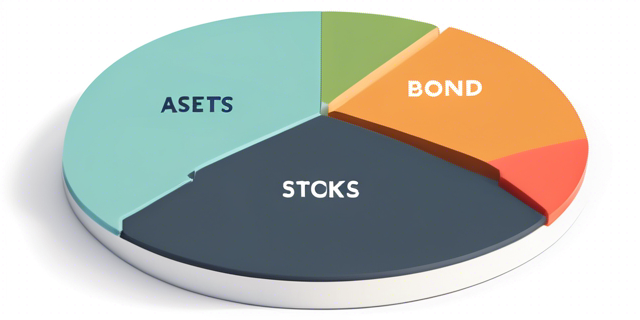

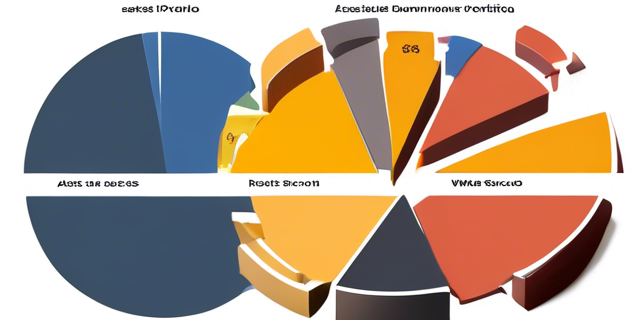



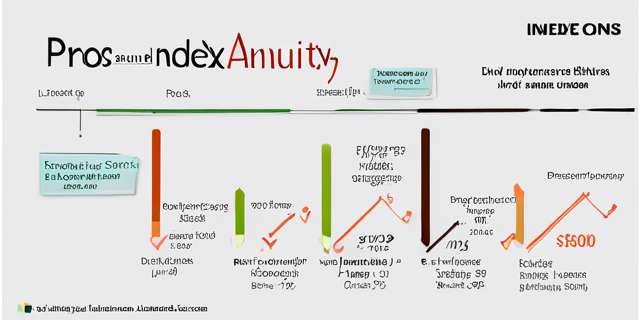


Do you mind if I quote a couple of your posts as long as I provide credit
and sources back to your blog? My blog is in the very same
area of interest as yours and my visitors would definitely benefit from
some of the information you present here. Please let me know if this okay with you.
Appreciate it!
That is not a problem. You are warmly welcome. That would be great